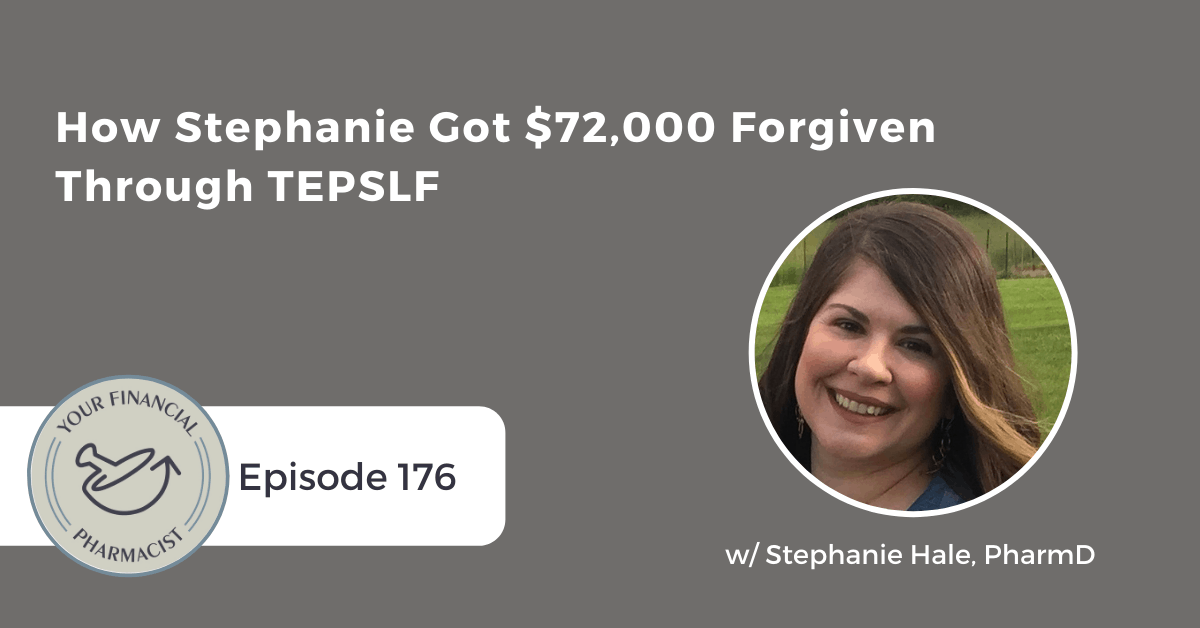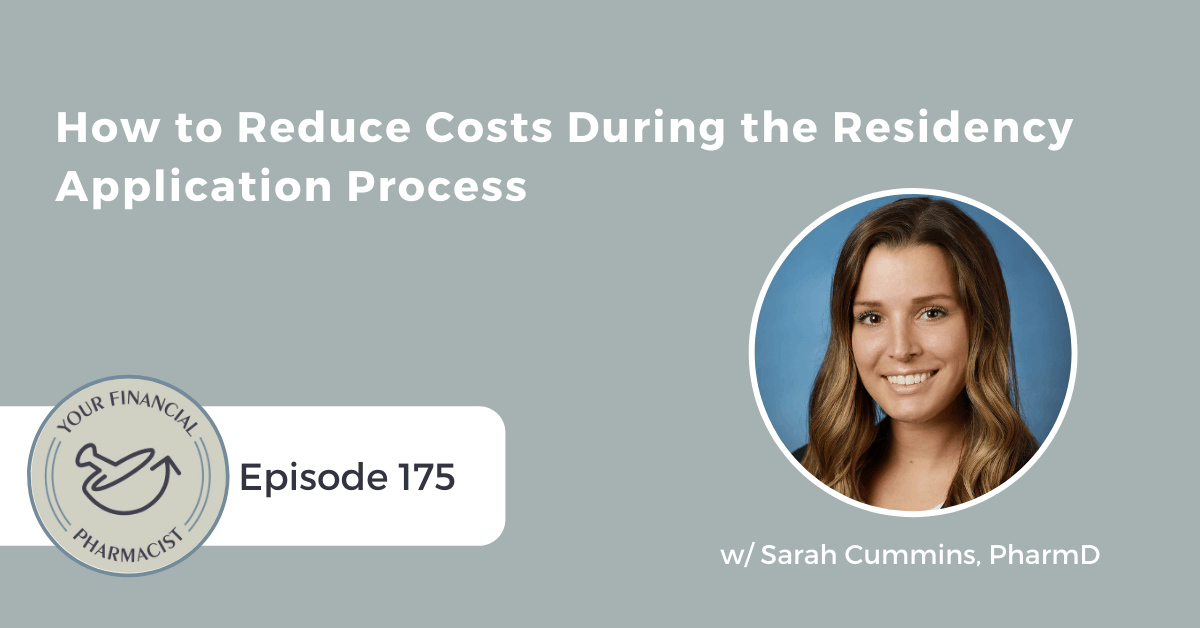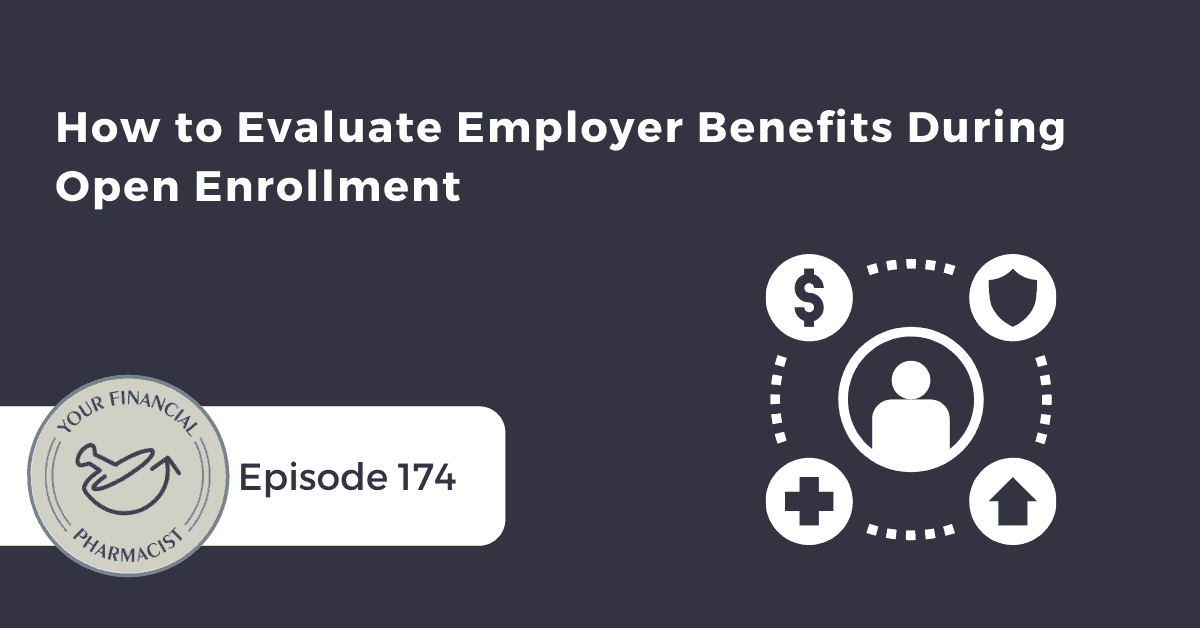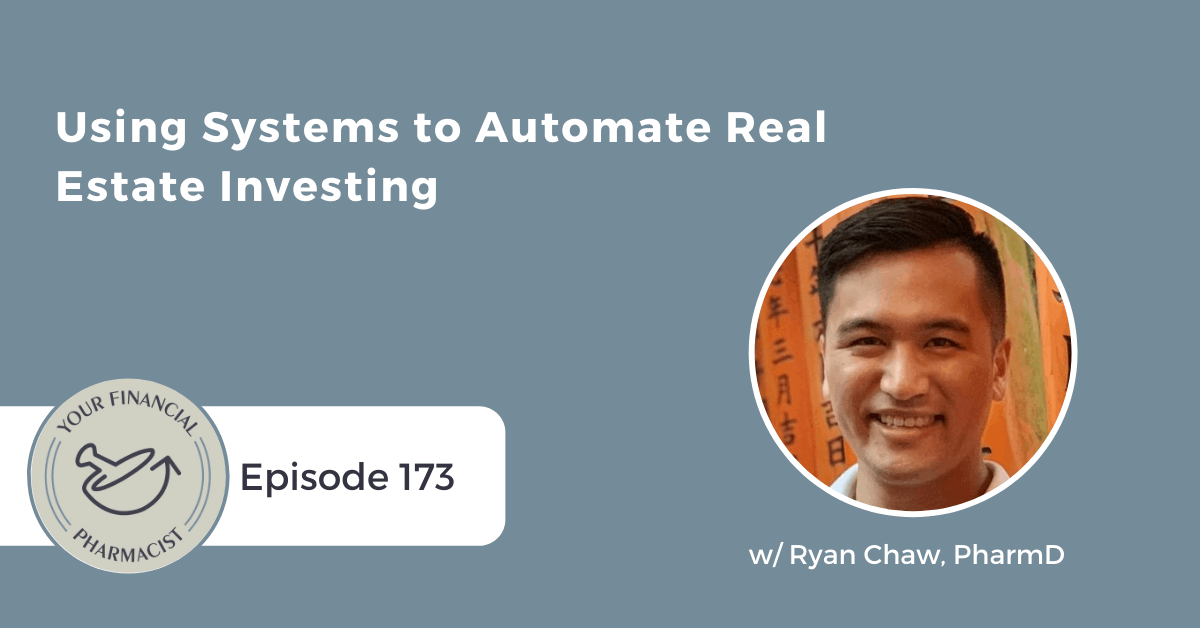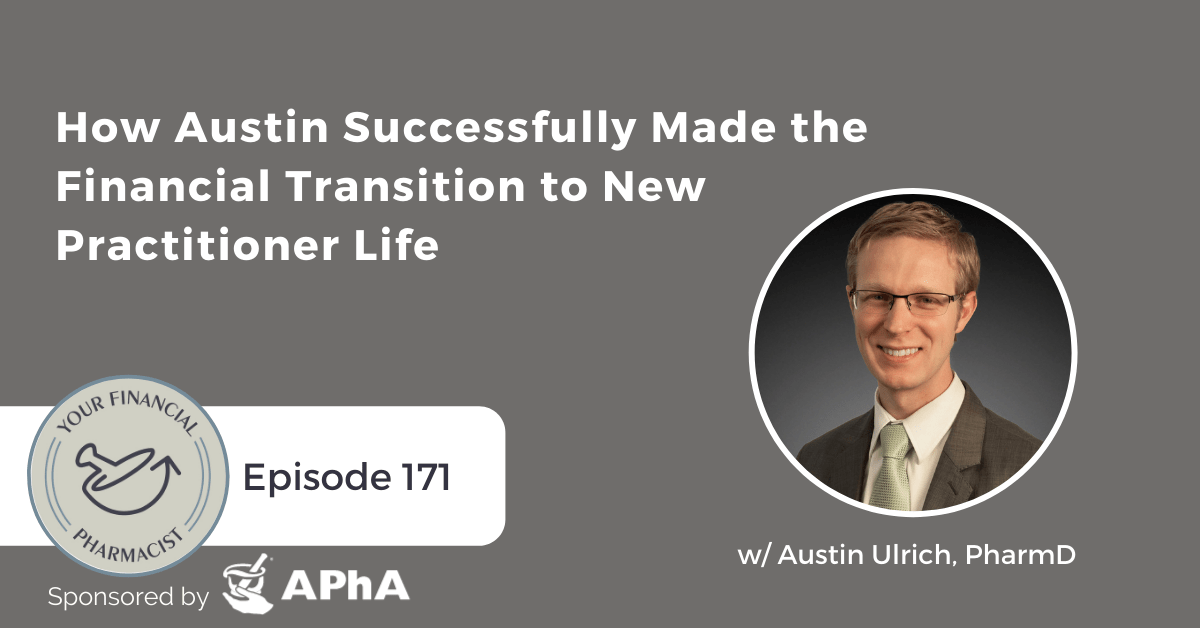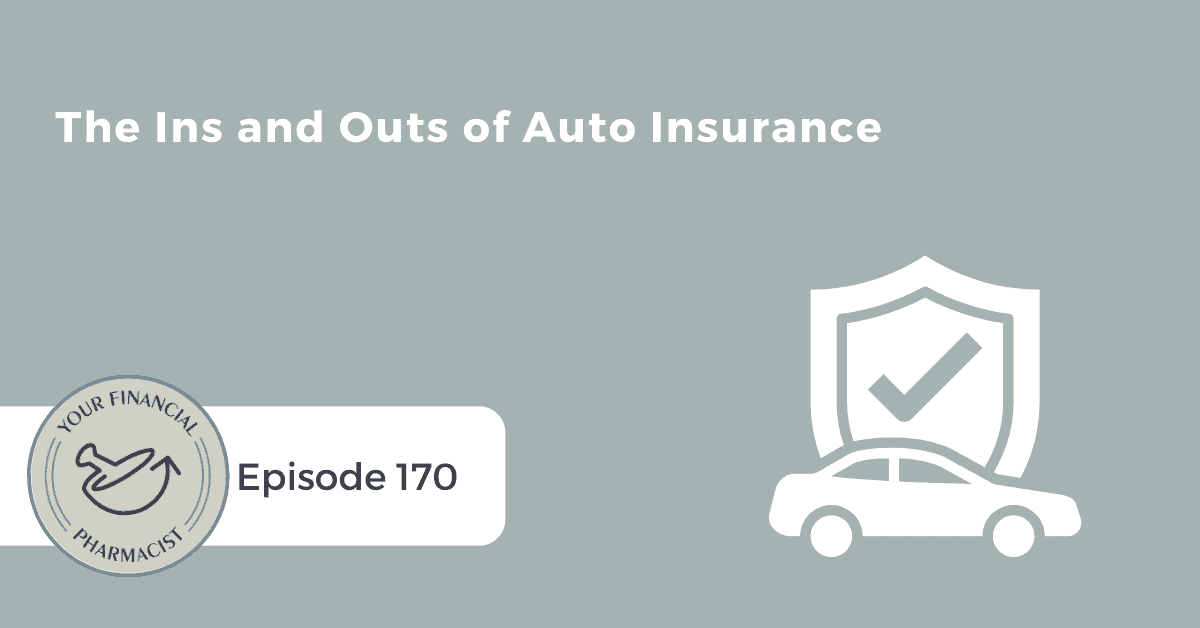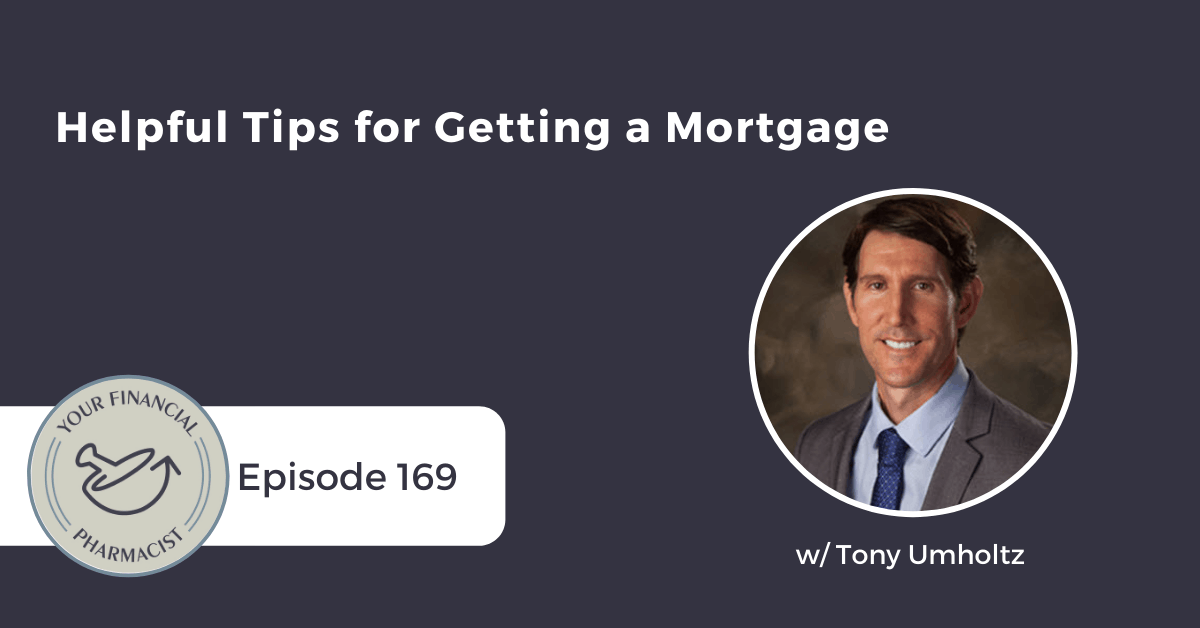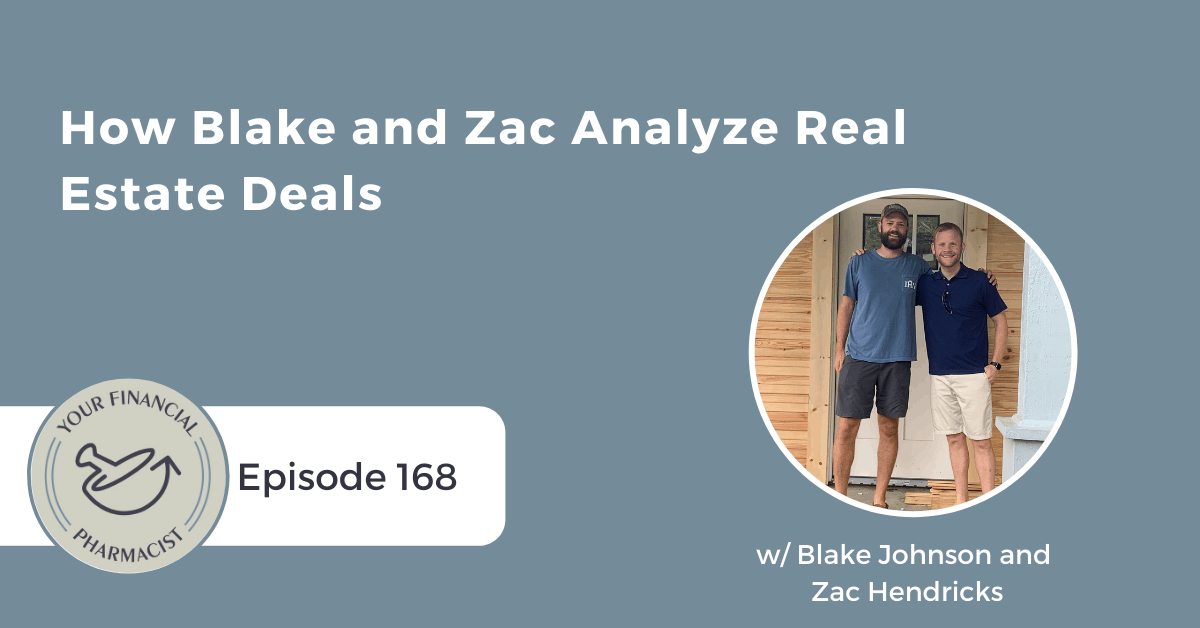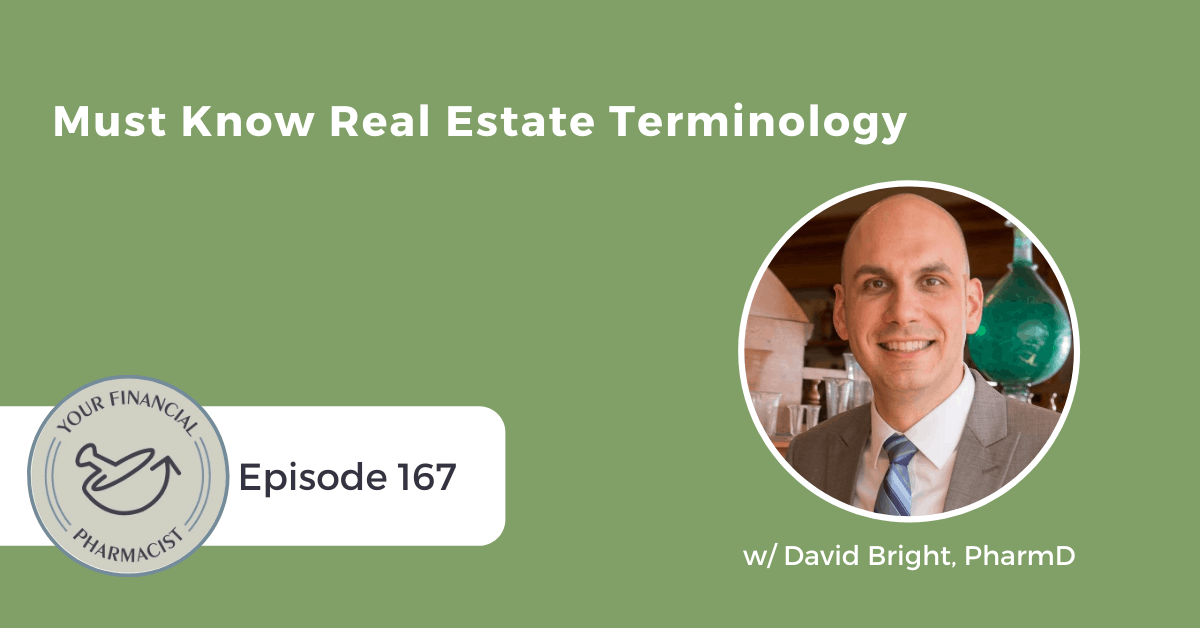How Stephanie Got $72,000 Forgiven Through TEPSLF
Stephanie Hale shares her journey applying for and receiving Public Service Loan Forgiveness (PSLF).
About Today’s Guest
Stephanie Hale, Pharm.D., BCPS is a pharmacist for WellSpan Health System in south central Pennsylvania. She completed her pre-pharmacy studies at Rutgers University and the University of Maryland, Baltimore County. Stephanie then completed her Doctor of Pharmacy degree at the University of Maryland School of Pharmacy.
While enrolled at the University of Maryland School of Pharmacy, Stephanie worked as an intern for Wal-Mart Pharmacy. Upon graduation in 2008, Stephanie practiced retail pharmacy at Wal-Mart. In 2009, looking for a change, she accepted a staff pharmacist position at WellSpan Health and courageously transitioned from the comfort of retail pharmacy to the diverse world of hospital pharmacy in a Trauma Level 1 hospital. Within 2 years, Stephanie was promoted to a Clinical I Pharmacist position giving her the opportunity to participate in patient specific dosing regimens including pharmacokinetics, total parenteral nutrition, and anticoagulation. During her time at WellSpan York Hospital, Stephanie earned her BCPS certification and was a member of various committees, all while having and raising two wonderful children.
In 2019, Stephanie transferred to WellSpan Gettysburg Hospital. With her vast experience and knowledge, Stephanie immediately became an integral member of both their inpatient staff and the outpatient infusion team.
Earlier this year, Stephanie’s federal loans were discharged through the Public Service Loan Forgiveness program. Stephanie and her husband are looking to use the money that is no longer going toward those monthly payments to explore real estate investing.
Summary
When Stephanie Hale graduated pharmacy school in 2008 she had about $100,000 of federal student loans and $20,000 of private student loans. After the six month grace period, Stephanie was left feeling overwhelmed with what to do, so she consolidated the loans so she’d only have to make one payment a month.
In 2016, one of Stephanie’s colleagues that had recently graduated began talking about PSLF at work and how he was pursuing it. This caught Stephanie’s attention as she didn’t know what it was. After looking into PSLF, she realized that she worked for the right type of employer and was approaching her ten year anniversary at her hospital. She transferred her loans to Fed Loan Servicing in September 2016 and learned that the repayment plan she was in didn’t qualify for PSLF forgiveness. She needed to be in an income-driven repayment plan, however this would have increased her monthly payments significantly. She put PSLF on the back burner and circled back to it in 2018, this time discovering that TEPSLF (Temporary Expanded Public Service Loan Forgiveness) could be an option for her.
After researching TEPSLF’s requirements and with a lot of patience, perseverance, organization and diligence on her part, Stephanie was granted forgiveness for over $70,000 of federal student loans in May 2020.
Mentioned on the Show
- The Pharmacist’s Guide to Conquering Student Loans by Tim Church
- FedLoan Servicing
- Ask a YFP CFP #36: If I’ve been under the wrong repayment plan, can I apply for Temporary Expanded Public Service Loan Forgiveness (TEPSLF)?
- YFP 018: Maximizing the Benefits of Public Service Loan Forgiveness (PSLF)
- YFP 078: Is Pursuing the Public Service Loan Forgiveness Program a Waste?
- College Cost Reduction and Access Act of 2007
- Temporary Expanded Public Service Loan Forgiveness (TEPSLF)
- Email [email protected]
- Public Service Loan Forgiveness Program Support (PSLF) Facebook Group
- Your Financial Pharmacist Podcast
Episode Transcript
Tim Ulbrich: Stephanie, thank you so much for taking time to come on the show.
Stephanie Hale: Hey, thank you for having me. Hopefully I’m able to help anyone who’s thinking about going through this journey.
Tim Ulbrich: Really appreciate your willingness to do that, and I think it certainly is going to be the case and excited for everyone to hear your story. And we are often asked if PSLF is a viable option and if pharmacists should even consider it given all of the news and attention that it has received. And so when I saw your comment on the YFP Facebook group about receiving forgiveness through the TEPSLF program, I knew we had to bring you on the show because I think it’s going to do exactly that — it’s going to give some more information and perhaps some will realize maybe they’re eligible for something they didn’t know they were eligible for, weren’t thinking they would meet that eligibility criteria, and it’s going to be an example for someone who has actually walked down this path and received that forgiveness. So before we dig into your PSLF journey — or I guess your TEPSLF journey, however we want to say it — I’d love to hear more about your background in pharmacy, where you went to school, and what your career story has been thus far.
Stephanie Hale: Yes, so I did my undergrad at Rutger’s University in New Jersey. I did a year there before deciding I was going to transfer to be closer to home. So I did another year of undergrad at the University of Maryland-Baltimore County. And then the following year, I started at the University of Maryland School of Pharmacy in Baltimore. So I graduated in 2008 from pharmacy school and throughout pharmacy school, I was an intern at Walmart and I figured that’s what I was going to be doing. I enjoyed it a lot. And then about a year out, I decided that I wanted to try something different. So I had called one of my location sites a local hospital, and luckily they were hiring. And so I started there September of 2009.
Tim Ulbrich: Awesome. Very good. Thank you for sharing that. And I think it’s a good segue into our discussion about the debt journey and ultimately, the forgiveness journey. So let’s talk a little bit more about student loans. You get to the point of graduating. So tell us a little bit about how much you had at that point, how you felt about the debt while you were in school, as well as while you were making that transition and that point in time what your plan and strategy looked like to ultimately pay back the student loans.
Stephanie Hale: Yeah, so while in school, I just figured hopefully I’ll graduate, I’ll have a great job that makes good money. So I will pay it back. So when I graduated, I had roughly about $100,000 in federal loans and about $20,000 in private loans. And after graduation, you know, you had about six months’ grace period. I got to looking into everything with all the paperwork they sent you. It was a little overwhelming. And so I decided at that point to consolidate my federal loans. I was like, I’m going to miss a payment if I don’t consolidate. I forget how many different lenders there were. So I did consolidate, which proved to be helpful later on.
Tim Ulbrich: Very good. And at that point, was PSLF even on your radar? And if not, when did that come into play?
Stephanie Hale: So I think PSLF was new in 2008, so it was not on my radar. So I had consolidated to a 30-year loan, decided I’m just going to pay for 30 years, and this is the way it’s going to be. At the time, I wasn’t married but I was engaged to my husband. And we were planning for a wedding, so I figured 30 years is what we could afford at the time, we were paying for an apartment at the time, so I had just had thought OK, well it’ll be 30 years, and we’ll see what happens.
Tim Ulbrich: Awesome. So looking at a long 30-year timeline at that point, obviously as you mentioned, PSLF was new, so enacted in 2007. So that was the first group, wasn’t even eligible for receiving that tax-free forgiveness until 2017. So one of the things that we have talked about on the show before is that I think for individuals such as yourself that graduated in that time period where shortly after PSLF was enacted, legislatively, you know, while that happened, there wasn’t a whole lot of good guidance around what folks should do. And I think like there was certainly much better advice that’s out there today. So many folks out there may be unaware of the options as well as whether or not they were PSLF-eligible. So when did PSLF then come on your radar?
Stephanie Hale: So I had been working at the hospital, and I think around 2016 or so, a colleague of mine was talking about it. He was newly graduated, he started working there, and he’s like, I’m going to be doing PSLF. What’s that? So I looked into it, and I was like, well, I guess it doesn’t hurt to try. So in doing that, you have to transfer your loans to FedLoan, so I did that. That was about September 2016. And I did get the denial saying my loans did not qualify. So at that point, I kind of just put it on the back burner and didn’t even think about it for awhile.
Tim Ulbrich: And when they sent you that rejection in 2016, and then you mentioned putting it on the back burner, what was the rationale for the rejection at that point in time?
Stephanie Hale: I would have had to change income-based payments, and the payments would have been a lot more than I could afford at the time. I believe it was going to be — my payments were roughly $600. And I think that they were going to go up to like $1,100 or $1,300. And we had already at that point bought a house, I had one kid, thinking about having another. So I was like, I don’t think we can do this. So at that point, I had been paying my loans for almost 8 years. And I was like, well, I’d have to start all over again and be another 10 years and by that point, I’ll have been paying 18 years. And I didn’t know if it financially made sense.
Tim Ulbrich: Sure, OK. So I want to make sure I’m summarizing correctly because I think this is such an important part of your story. At this point in time, 2016, you hear about PSLF, you obviously have been in the workforce, you’ve been working for an employer that would count as a qualifying employer, and obviously you’ve been making federal student loan payments all along the way. But you weren’t in a qualifying repayment plan. And so obviously the pieces here that we need to consider would be one, you’d have to get into a qualifying repayment plan — and we’ll talk about the logistics there with TEPSLF — but at that time, that would have meant a significant bump in payment per month, an extra $600 or $800 per month, which obviously is significant. It matters. But you did make the change in terms of FedLoan servicing as your servicing company, which would have been the loan servicing company for those that were pursuing PSLF. So that door was still open.
Stephanie Hale: Yes.
Tim Ulbrich: And then fast forward a couple years, and why did you end up coming back to this in 2018?
Stephanie Hale: So like I said, I was just going about my business and I don’t know — like I said, I saw it on Facebook or I saw it just scrolling through the news about TEPSLF. I’m like, oh, what’s this? So I started reading it, and I was like, I think I might qualify for this. And that was I want to say August of 2018. And at that point, I’d had a second kid, working full-time. So very busy. So I actually didn’t look more into it until I think it was closer to December when I actually sat down and I was like, I need to look into this and see how I can go about this. So I knew that I was coming up on 10 years with my employer and I had the correct type of loans, I knew I just didn’t have the right type of repayment plan.
Tim Ulbrich: Perfect. And insert there Temporary Expanded Public Service Loan Forgiveness. And so I want to take a few moments to do some education on the terminology for those that may be hearing some of this for the first time. So Stephanie, hang tight —
Stephanie Hale: OK.
Tim Ulbrich: — for a few moments, and we’re going to come back here to the story and learn more about the execution and ultimately what happened at the end for you. So TEPSLF is Temporary Expanded Public Service Loan Forgiveness and really is intended for exactly what we’re talking about here today. Folks that may be working for a qualifying employer, who have been making what would be qualifying payments in terms of federal student loan payments, but are often in the wrong repayment plan. And that can be for a variety of reasons. And to be fair, this isn’t extremely easy to navigate. And so I think sometimes there’s issues around consolidation or people are often in an extended or graduated repayment plan, thinking they’re making qualifying payments, but they are not. Or folks such as yourself, Stephanie, where you may be looking back and saying, oh my gosh, I am working for an employer that is really the intended audience for something like PSLF but just didn’t think of it that way from the get-go, and therefore are now trying to look retroactively to see if this is an option. And so if folks want to learn more — and we’ll talk about the details of TEPSLF here in a few moments — we also talked about it on one of the recent Ask a YFP CFP episode, Episode 036 where Karen from Coral Springs asked the question around this — really this — being under the wrong repayment plan and what that meant for the TEPSLF application. Now, one other thing I want to talk about for a moment is just a brief history and the mechanics of PSLF. Now, we’ve talked about this on the show before. Episode 018, we talked about maximizing the benefits of PSLF. Episode 078, we talked about is pursuing PSLF a waste? And that was when there was a lot of headline attention and news that came out about only 1% of folks that were successful in achieving that PSLF forgiveness. And we felt like it was an important episode to really break down the data further. And of course, we talked about PSLF in “The Pharmacists Guide to Conquering Student Loans,” which is available at PharmDLoans.com. And so I think as we look at the history of this, it’s really, really relevant here as we look at Stephanie’s timeline in terms of what played out and the information that was available to her and ultimately, having to look backwards to correct some of this. So as we talk about PSLF, this is typically loan forgiveness, the loan forgiveness strategy that gets all the press — usually, for all the wrong reasons. And I think it’s important that we look at some of the history of why that is the case. The Public Service Loan Forgiveness program, PSLF program, was created under the George W. Bush administration via the College Cost Reduction and Access Act of 2007. Now, since the program’s inception, it’s faced significant political opposition from both administrations since Bush, since President Bush. President Obama proposed a cap of $57,500 for all new borrowers in his 2015 budget proposal to Congress. And then in 2016, the PSLF program was threatened this time by the Republican party with the congressional budget resolution that saw PSLF on the chopping block for the first time for all new borrowers. And since then, PSLF has remained an endangered species as both President Trump’s budget and the Republican-backed PROSPER Act proposed the elimination of the program for borrowers after July 1, 2019. Now, the good news is that those have all been proposals and talk, and despite its rocky past and uncertain future, we believe that PSLF is one of the best payoff strategies for pharmacists paying off their student loans if they meet the qualifying criteria because of what it means in terms of tax-free forgiveness and what you are then able to do with that money that otherwise could be going towards student loans that of course you could allocate to other parts of your financial plan. Now, it certainly has considerations. It has logistics. It has details. And you have to be crossing your t’s and dotting your i’s like we’re talking about right now. But assuming that those things are happening, it can really be a great option for many pharmacists that are facing significant student loan debt and certainly can be a viable path forward. Now, quickly on the rules for PSLF: You have to work for the right type of employer. We’re talking about that here with Stephanie’s story on this episode. You have to be working for a not-for-profit employer or government agency. You have to have the right kind of loan, and that’s really where TEPSLF comes in — and we’ll talk about that as well as the connection to the repayment plan. So that loan has to be a direct consolidated loan, and if you haven’t done that and you think you’re making qualifying payments, again, TEPSLF is an option to consider. Now, you also have to be in the right repayment plan, typically an income-driven repayment plan. You have to make the right amount of payments, 120 payments. And ultimately, you have to prove it when it’s all said and done to both apply for and receive tax-free forgiveness. So Stephanie, thanks for bearing with me as we went through that. Let’s come back to your story here. You’ve identified that you’re working for a qualifying employer, obviously you haven’t been making all the full qualifying payments because you weren’t in the right repayment plan. So you start to pursue the TEPSLF option to be able to then retroactively get those payments counted. So what did you need to do at this point in time to get to today where we now are at that point of where the money has been forgiven? What did you have to do to actually take advantage of the TEPSLF program and its requirements so that you could ultimately receive that tax-free forgiveness?
Stephanie Hale: Sure. So one of the rules of TEPSLF — and I’m going to read from their website — “to be eligible for TEPSLF opportunity, the amount you paid 12 months prior to applying for TEPSLF and the last payment you made before applying for TEPSLF must have been at least as much as you would have paid under an income-driven plan.” So I kept reading that and I was like, well, I’m not making income-based payments. My payments weren’t as much as I would have been paying, so after talking to the people at FedLoan, I decided that the best thing to do was to change to an income-driven payment plan. So I went ahead and did that. I applied in December of 2018 and the payments went from $580 up to $814. And so what I decided to do — at this point, like I said, we had a house, two kids — I decided to decrease what I was putting into my Roth 403b. I figured, you know, a year wouldn’t hurt so bad, especially if I qualified for TEPSLF and got these loans forgiven. So that’s exactly what I did. And so I applied in December and my first income-driven payment in February of 2019. And at that point too, I had asked about what was my history that they had because when applying for PSLF prior, they just said that I didn’t have the correct number of payments. But they never really told me — they don’t count how many payments you actually have for TEPSLF. They just look at your income-driven payments. So mine were at 0. And so they told me that they had some missing information I think in 2013 and they said, oh, we have those in some files that need to be converted. Just give us a call back in a couple weeks. We’ll let you know. I call back in a couple weeks, and they still didn’t have that information. They said, who told you that? Well, it will take us probably six months. I put it in my planner. So this is something that I recommend is definitely document all your phone calls and everything. I put it in my planner, I called back in six months, they’re like, no, we don’t have this converted. It’s taking a lot longer, and I don’t know who told you six months. It will be about a year. Like OK. So I just kept calling back, just to make sure that they were on top of things and making sure that they knew that I was looking into it. So I went ahead and applied for PSLF in April 2019 because I was told I had to go ahead and apply because they would have needed to know that I would have made income-driven payments for a year, not that I actually had to make the income-driven payments, which at the time didn’t make sense. I’m getting information from — different information every time I call. So like what does it hurt to go ahead and apply for this PSLF? So yeah, so that is one of the things. You have to apply for PSLF and get denied before you can — they look into TEPSLF. So I got denied for the April PSLF application in June. And then at that point, I had also submitted — you have to submit an email saying that you want to be considered for TEPSLF. And I got that denial for TEPSLF in September, that September 21. So then I went ahead and applied for PSLF again September 25 because at that point, I already had 10 years with my employer. So I figured, OK, well I’ll try for the 10 years even though it hasn’t been a year of income-driven payments. But we’ll see what happens. And ultimately, I got denied for PSLF in the end of October. And then for TEPSLF, it was just a few days after that this time. And that was — the reason for that was because I needed the payments the 12 months prior to applying for TEPSLF and the last payment had to be the income-driven payment. Then I waited and applied after my 12th payment in January, and that was January 10. I got denied January 30 for PSLF. And then I got denied for TEPSLF February 27. And actually, I found out that I was denied for TEPSLF probably about a week before I actually got the letter in an email. I had been making phone calls, probably I was calling at least once a week, sometimes twice a week, just to follow up. But yeah, so the week before I actually got the official denial, they had told me you don’t qualify because you need 13 payments. So when you apply for PSLF, there’s a box that you can check stating that you don’t want forbearance while they’re going through the paperwork. So I always made sure to check that box to make sure that I was still making payments, just in case anything happened like this. And I figured I would get the money back in the end anyways if I made too many payments. So at that point, I reapplied again, this was February 29, for PSLF. And I got the denial in March 12 for PSLF. And then I got a letter stating that I was being considered for TEPSLF May 13. And ultimately, I was forgiven May 27.
Tim Ulbrich: Wow. OK. I mean, a couple of things: This is great. And I appreciate the detail because I think it’s so important here. And as you were talking, you know, things that stood out to me were No. 1, patience.
Stephanie Hale: Yes.
Tim Ulbrich: But persistence. I mean, you went through multiple denials, making multiple phone calls, and obviously you saw the value that was going to come from having it forgiven. And I think showing to them as well, like you’re not going away, right? And so you know you’re going to make sure you get this taken care of. And if you qualify, you qualify. And you need to have that recognized. So definitely patience as many, many months and some years went by but also persistence in making sure you’re calling back and you’re following up. You know, the other takeaway I had there, Stephanie, was documentation. I mean, just so you can chronicle this verbally tells me you had great documentation along the way, which of course is important. And we’ve heard that before. We’ve discussed that before on this show. And if you run into issues, the documentation is important as well as I just think for your own sanity but also being able to prove that information in previous conversations in case you run into issues. And then I think I also heard that you’re really well-versed or at least learning along the way about the requirements and making sure you had good information and you were spending time to understand the rules and trying to interpret them so that if you were calling and you think you’ve got some erroneous advice or perhaps you’re getting different answers along the way, that when you called in, you knew that information, you could follow up with the information you learned, and you could continue to be persistent, obviously because there may be interpretations along the way, depending on who you were talking to.
Stephanie Hale: Correct.
Tim Ulbrich: So great. Yeah. I’m guessing you did get that right. I heard that you got some different input along the way when you called in. Is that correct?
Stephanie Hale: Yes. So I had learned that just because someone says one thing doesn’t mean it’s actually true. So I would call, someone would tell me one thing, and then I’d call again, someone would tell me something different. So I always made those notes. And I was like, well — I wasn’t sure what to believe. But if somebody said one thing and I hadn’t done that yet, I would be like, maybe I’ll do this instead. That’s why I applied early for PSLF those couple times. Like it didn’t hurt. And actually, I do feel like applying early those couple times kind of helped because it probably helped to move them along with counting my payments because they had already done that those couple times before. I feel like my process from February to May when I got forgiven went fairly quick compared to some of the other people that I’ve heard trying to pursue this. But like I said, I think it’s because I had applied before, and they had already had that information, me being persistent and following up.
Tim Ulbrich: And how much when it was all done, so you get to May 27, if I heard you correctly, it’s forgiven and it’s forgiven tax-free. What was the actual dollar amount that was forgiven?
Stephanie Hale: So my account balance, which I think included interested, was $69,900. And then I ended up getting about $3,800 back of overpayments. But then when I’m looking at the email of the amount of loans forgiven, it’s roughly $72,000. So I don’t believe that includes any of the interest.
Tim Ulbrich: Got it. OK. So a little over $70,000. And right now, your account balance is — so $0s are showing. Is that right?
Stephanie Hale: Correct.
Tim Ulbrich: That’s awesome.
Stephanie Hale: So one of the fun things I had learned was — so there’s an app that you can have on your phone. And when you try to log into the app if you’re pursuing PSLF or TEPSLF, once your loans have been forgiven, you’ll get this big “Caution” sign saying that you can’t log into your app, it’s no longer working. So I got that that morning. I was like, oh, this is a good sign. So then I went onto the actual website on my computer and was able to see the balance was $0.
Tim Ulbrich: That is awesome.
Stephanie Hale: So I was able to find out before they actually sent me the official notice.
Tim Ulbrich: Yeah, when you no longer can get in and the “Caution” flag, it’s a good day, right?
Stephanie Hale: Yes, it was.
Tim Ulbrich: I mean, you reached the finish line. And obviously you put a lot of hard work into this. And I think that’s what’s so refreshing, Stephanie, you know, to me, as I mentioned a couple times already, it’s just your persistence in this in terms of not only the process but making sure you felt like you were really understood the things and were getting your questions answered. But also, you know, to that, I think many folks are going to hear this story and say, “I had no idea I could look backwards and consider PSLF through this TEPSLF option.” So I think we’re going to have many people that are going to listen and are now going to pursue this, and they are probably going to hit the barriers that you hit along the way. And you know, they’re going to have to knock them down and be persistent, just like you showed us here and you demonstrated in your own story. But I sense this will give many people hope in their own journey and ultimately as we talk about the bigger picture here with your financial plan, what it means when you don’t have to be putting money towards student loans because you can allocate that elsewhere into your financial plan. So I want to just quickly outline for those that are hearing this and thinking, OK, maybe I qualify for TEPSLF. There’s really four steps that you need to be thinking about. No. 1, you have to check your PSLF eligibility. And we talked about that already throughout Stephanie’s story. Are you working for the right type of employer? The right loan? And as we talked about, that’s really where this TEPSLF comes in and really where the issues are in terms of making sure you’re in the right repayment plan, right number of payments, ultimately 120. And then you’ve got to be able to prove it and apply for that tax-free forgiveness. Now No. 2, as Stephanie mentioned, you have to show that you’re ineligible for PSLF. So you have to submit your application, and you essentially have to get denied and be determined ineligible. And then you really have to be looking at meeting the TEPSLF requirements. And that’s No. 3. And Stephanie talked about this with the need to switch to income-driven repayments, the number of payments that had to be made, and the dollar amounts associated with that. And for you, as you mentioned, that meant a temporary increase in payments, a little over $200 a month, which meant knocking down some of your retirement payments temporarily because you saw the bigger picture and what could be forgiven. And then finally, No. 4 is you have to request the TEPSLF certification, and you can do that through email. There’s actually not a form. So to do that, it’s [email protected]. Again, [email protected]. And we’ll link to that in the show notes as well as some information on studentaid.gov that actually includes some draft language and examples that you can use when doing that communication via email. So Stephanie, my final question for you, now on the back end of this and you went through this long journey to get here, you know, what does this mean for you and your family and your financial plan both monetarily in terms of having more cash flow available because it’s not going toward your student loans as well as just non-monetary, what this means in terms of having this off your back?
Stephanie Hale: Well, definitely a weight off my shoulders. I’m the breadwinner, so that was just something that was taking a toll on me and just even though I’d already been paying for 12 years or so, it was just — it was so nice to not have to think about that anymore. And financially, we’ve been tossing around the idea of getting into some real estate investing. But if we don’t do that, I mean, we do have two kids, so we want to start putting away more for their college and just being able to save more and have a more comfortable retirement or even be able to retire a little bit earlier.
Tim Ulbrich: Awesome. Yeah, that’s great. I mean, I think the options that are available certainly go up, whatever that would be as a part of your financial plan, and goals when you don’t have to make those payments anymore. Any words of advice you would have for folks that maybe find themselves in a similar position as you did where you already had several years in of meeting that employment qualification or even perhaps folks that are even more in the front end of this and really looking at this to say, is this really worth it, considering all the logistics and everything that you’d have to do? What thoughts and advice do you have for them?
Stephanie Hale: Well, I definitely want to say there’s a really good Facebook group called Public Service Loan Forgiveness program support. I joined that, and they — you can ask any questions there, you can look up, you know, if you have a question, you can look up whatever you’re looking for. And somebody probably has asked that. But they were very supportive. And it definitely gave me hope because people would post whenever they got forgiven, and it actually — the funny thing is it comes in batches. It’s like they forgive a group of people at a time. So there will be no activity for awhile, and then all of a sudden within a week there’s probably, you know, I don’t know, 15-20 people posting that they were forgiven. But if you search #PSLFvictory or #TEPSLFvictory, you can see people’s stories of being forgiven. So it definitely gave me a lot of hope. And a lot of people there too talk about the Freedom of Information Act. You can request your paperwork for that. And a few have issues with any payments that were missing. Luckily, I did not have to do that. And other people also asked for the help of an ombudsman, which is somebody that’s assigned to you to help you through the process if you’re having issues. Again, I didn’t have to do that either. But those are different options that you can have, that you can use, if there’s issues with your payment history. And I was looking yesterday and it looks like there’s roughly about $600 million left with TEPSLF. They expect it to last another 2-3 years. So if it’s something that you’re considering if you’ve worked for your employer for close to the 10 years, made the 120 payments, definitely look into it now and try to get that straightened out before then because it will run out.
Tim Ulbrich: Great advice, Stephanie, encouragement. We’ll link to that Facebook group as well as other resources we’ve talked about on today’s show in our show notes that we publish. And you can find those show notes by going to YourFinancialPharmacist.com/podcast and finding this episode, Episode 176. And then we’ll have all of that information right there. Stephanie, I really appreciate you taking the time to come on the show to chronicle your TEPSLF journey. Excited to have you on officially as the first pharmacist that we have interviewed that has had their loans forgiven. We know there are others out there, and we hope and plan to feature more stories in the future. And as always, to our YFP community, if you liked what you heard on this week’s episode, please leave us a rating and review on Apple podcasts or wherever you listen to the show each and every week. And I hope you’ll join us if you haven’t already in the Your Financial Pharmacist Facebook group, over 7,000 pharmacy professionals committed to helping one another on their path towards achieving financial freedom. So thank you again all for joining, and have a great rest of your week.
Current Student Loan Refinance Offers
[wptb id="15454" not found ]Recent Posts
[pt_view id=”f651872qnv”]

